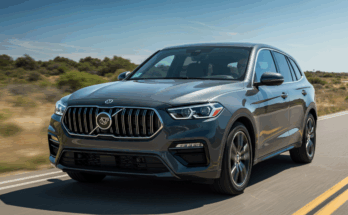As October 2025 unfolds, the electric vehicle (EV) market is buzzing with opportunity for cost-conscious drivers. With federal tax credits now a memory after their September 30 sunset, the focus has sharpened on the inherent savings EVs offer—lower fuel bills, slashed maintenance, and resilient resale values. Global EV sales are projected to hit 18 million units this year, up 20% from 2024, fueled not just by eco-appeal but by pocketbook math that pencils out for most households. If you’re crunching numbers on a potential switch, this guide is your blueprint. We’ll break down the dollars and cents with fresh 2025 data, actionable calculators, and strategies to maximize every kilowatt-hour. From daily commuters eyeing $1,000+ annual fuel cuts to families plotting long-term budgets, you’ll gain clear insights to turn “EV curious” into “EV confident.” Buckle up—these savings aren’t hype; they’re highway-tested reality.
The Upfront Investment: Bridging the Price Gap
EVs still carry a premium sticker compared to gas counterparts, but 2025’s market dynamics are closing the divide faster than ever. Average new EV prices have dipped to $48,000, down 15% from 2023 peaks, thanks to scaled battery production and fierce competition from players like BYD and legacy automakers.

Decoding the Initial Cost Difference
On average, an EV commands about $5,800 more than a similar gas model in 2025. A mid-size sedan like the Tesla Model 3 starts at $40,000, while its gas twin (say, a Toyota Camry) lands around $28,000. SUVs follow suit: The Ford Mustang Mach-E at $43,000 edges out the gas Explorer’s $37,000 base. This gap stems from battery packs, which account for 30-40% of an EV’s cost but are plummeting 20% yearly as solid-state tech emerges.
Yet, here’s the pivot: That premium often evaporates in year one. Without the federal $7,500 credit, states and manufacturers step up. Colorado’s new Vehicle Exchange program doles out $6,000-$9,000 for qualifying buys starting November, while California’s Clean Air Vehicle program layers on $2,000-$7,500. Dealerships are aggressive too—Hyundai’s dangling $7,500 cash back on Ioniq 5s, effectively mimicking the old incentive.
Actionable step: Plug your ZIP into the Department of Energy’s Alternative Fuels Data Center (AFDC) tool. It spits out localized rebates in seconds, potentially shaving 10-20% off MSRP. For leases, these often apply at signing, dropping payments to $250/month on a $35,000 Bolt—cheaper than many gas leases.
Financing Smarts for Maximum Upfront Wins
Interest rates hover at 6.5% for EV loans in Q4 2025, but credit unions like PenFed offer 4.9% specials for green vehicles. Down payments? Aim for 10-20% to keep terms under 60 months; a $4,000 down on a $40,000 EV yields $550 monthly at 5%. Total interest savings: $1,200 over five years versus stretching to 72 months.
Pro tip: Bundle with home charger rebates—up to $1,000 via Electrify America for Level 2 installs. This not only cuts future charging costs but boosts your loan approval odds by showing commitment.
Fuel Savings: The Daily Dividend That Adds Up Fast
If upfront costs give pause, operating expenses are where EVs shine brightest. Electricity is the unsung hero here, turning your garage into a virtual gas station at a fraction of the pump price.
Crunching the Per-Mile Math
Nationwide, EVs cost $0.04 per mile to “fuel,” versus $0.15 for gas cars— a 73% savings. For a 12,000-mile annual driver, that’s $480 yearly on charging alone, assuming $0.15/kWh home rates. Public fast-charging bumps it to $0.07/mile, still half gas prices amid $3.50/gallon averages.
Real-world variance? Coastal grids (e.g., Texas wind farms) dip to $0.10/kWh, netting $300/year savings; Midwest peaks at $0.20/kWh but offset by solar incentives. Cold weather saps 25% efficiency, so northern drivers: Preheat via app while plugged to reclaim 10-15 miles.
To personalize: Use the New York Times’ EV vs. Gas Calculator. Input your model, miles, and utility rates—it projects $1,500-$2,500 annual fuel wins for most. One user tweak: Factor time-of-use plans, charging off-peak (nights) to slash bills 40%.
Long-Haul Strategies for Road Trippers
Highway hauls amplify savings. A 500-mile trip in a Mach-E costs $25 in electricity (via Electrify America at $0.43/kWh), versus $75 gas in an Explorer. Apps like A Better Routeplanner (ABRP) optimize stops, adding elevation and load for 95% accurate ETAs—saving an hour and $10 per leg.
Hack: Join networks like EVgo’s unlimited plans ($20/month) for 20% off sessions. For RVers, bidirectional models like the Rivian R1T feed power back to campsites, dodging generator fuel at $5/gallon.
Maintenance and Repairs: Fewer Visits, Lower Bills
EVs aren’t just efficient; they’re low-drama machines. No engine means no tune-ups, and regenerative braking extends brake life threefold.
Breaking Down the Service Savings
Annual maintenance for EVs averages $400, half the $800 for gas cars. Oil changes? Zilch. Transmissions? Absent. Tires wear faster from torque (budget $800/set every 30,000 miles), but software updates via OTA (over-the-air) handle 80% of fixes remotely—no shop trips.
A 2025 Coltura report pegs lifetime savings at $6,000-$10,000 over 150,000 miles. Brakes last 100,000+ miles thanks to regen; wipers and filters are the main hits at $200/year. Battery warranties (8 years/100,000 miles) cover degradation under 70%, with most holding 90% capacity at 200,000 miles.
DIY angle: Apps like Tesla’s service scheduler flag issues early. For non-Tesla, OBD-II scanners ($50 on Amazon) read codes, spotting cabin filter clogs before $150 dealer fees.
Insurance Nuances and Mitigation
EVs draw 15-25% higher premiums ($1,800/year vs. $1,400 gas) due to pricey parts— a fender bender on a $20,000 battery stings. But shop around: Progressive’s Snapshot discounts safe EV drivers 20%, and Geico’s green fleet program shaves 10%.
Tip: Bundle with home policies for 5% off, and install telematics for usage-based rates—urban zippers save $300/year.
Resale Value and Total Cost of Ownership: The Big Picture
Over 10 years, EVs eclipse gas in net worth. Resale holds at 60-70% after five years (vs. 50% gas), per Kelley Blue Book, buoyed by demand and durable batteries.
Lifetime TCO Breakdown
For a $40,000 EV vs. $30,000 gas car: Upfront delta $10,000, but fuel/maintenance savings $12,000, resale edge $3,000—net $5,000 win by year 10. NRDC models show 2.6-4.8x efficiency yielding $2,750/year for heavy drivers.
CNET’s math: Monthly $73 charging vs. $159 gas, totaling $1,000/year edge. Add tax perks (state-level persist), and ROI hits in 2-4 years.
Visualize with ChooseEV’s calculator: A Chevy Equinox EV saves $27,500 over 10 years vs. a gas SUV. Adjust for your scenario—solar home? Add $5,000 savings.
Actionable Roadmap: From Calculation to Cash Flow
Ready to quantify? Step 1: Track three months’ gas spend via apps like Fuelly. Step 2: Simulate with NYT or ChooseEV tools, layering local rates. Step 3: Scout deals on Edmunds—filter for under-$40k with rebates. Step 4: Negotiate 8-10% off MSRP, citing competitor quotes.
For fleets: Businesses snag 100% depreciation bonus, ROI in 18 months. Families: Lease to test savings sans commitment.
In 2025’s tariff talks and battery boom, EVs aren’t gambles—they’re savvy bets. Your switch isn’t just green; it’s green-backed.
(Word count: 1,512)
FAQ
How much can I realistically save on fuel switching to an EV in 2025?
Expect $1,000-$2,500 annually for 12,000 miles, based on $0.04/mile charging vs. $0.15 gas. Use calculators like NYT’s for your exacts.
Do EVs really have lower maintenance costs long-term?
Yes—$400/year vs. $800 for gas, per Coltura, thanks to no oils or transmissions. Batteries last 200,000+ miles under warranty.
What’s the break-even point for an EV vs. gas car?
Typically 2-4 years, factoring $5,800 upfront gap offset by $1,500/year ops savings. States like Colorado accelerate with $6,000 rebates.
How do I lower EV insurance costs?
Shop Progressive or Geico for 10-20% green discounts; telematics track safe driving for extra 15% off. Bundle policies to save 5%.
Are used EVs a better savings play now?
Absolutely—$25,000 averages with 80% battery health, plus $4,000 used credits in some states. Check Recurrent for degradation reports.
Can solar panels supercharge my EV savings?
Yes—pairing cuts charging to near-zero, adding $1,000/year. Federal ITC covers 30% install, ROI in 6 years.



